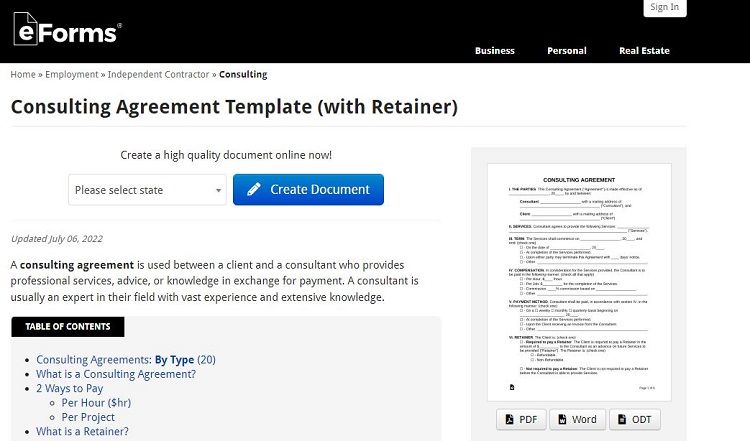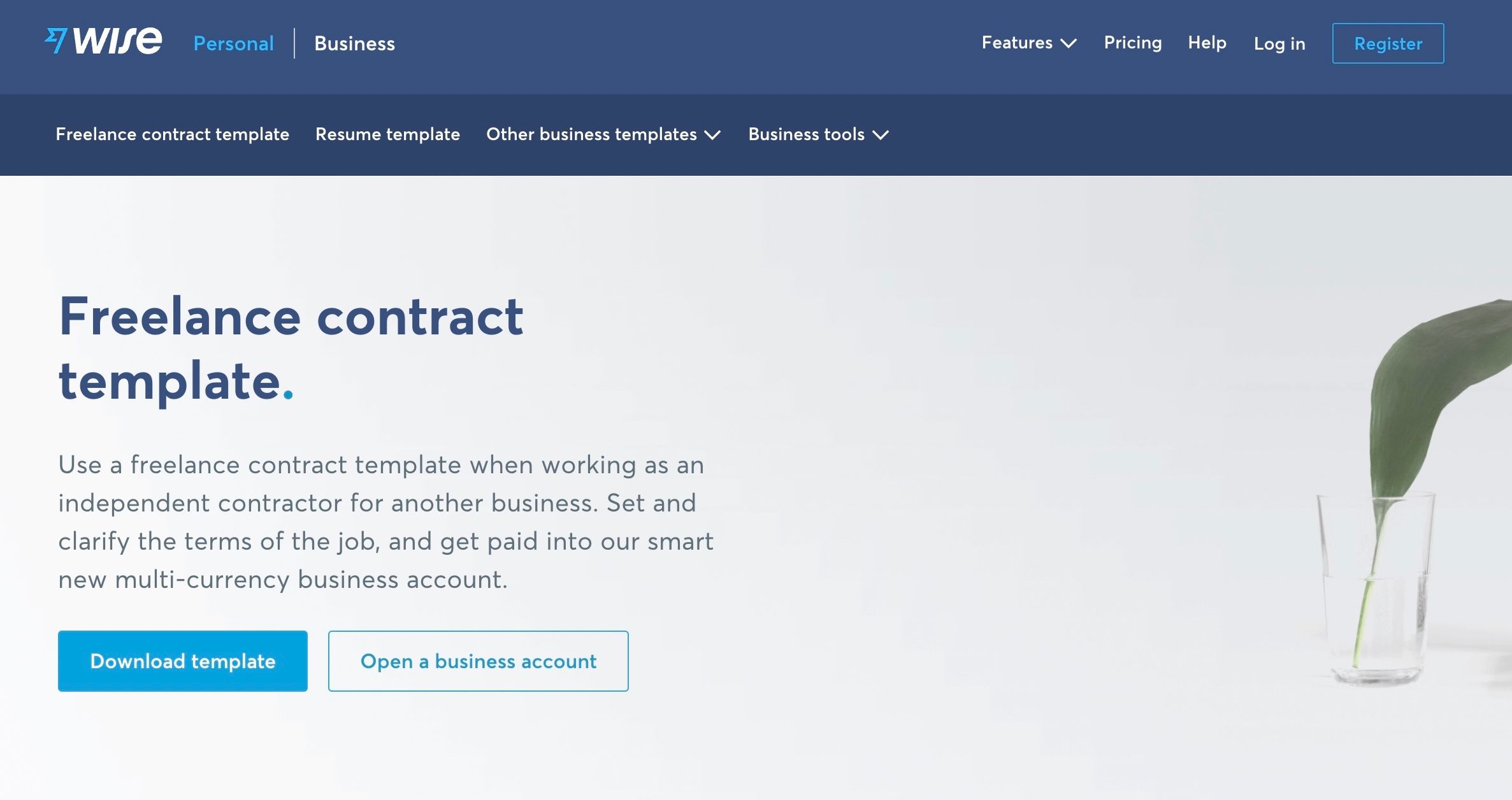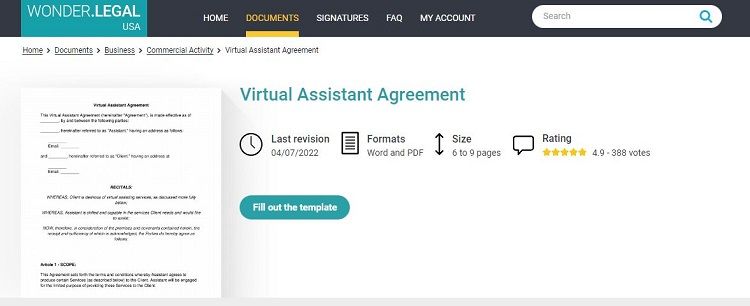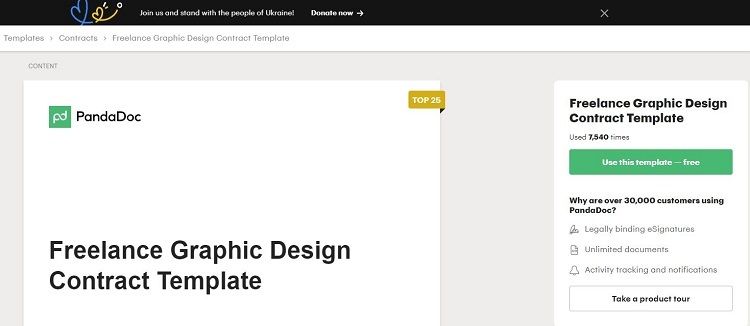Freelance is expanding as a way for people to earn a living. We've probably all heard stories about freelancers completing and delivering large, complex projects and struggling to get paid for the work.
Having a contract between you and the client can reduce future misunderstandings about payment terms, delivery deadlines, revisions, and who owns the rights to the completed work.
How to Write Your Freelance Contract
Below are the steps you can take to create your freelance contract:
1. Introduce the Parties Entering Into the Agreement
The first thing you need to do is include the names of the companies that will be signing the agreement. If the agreement is between two businesses, you need to list the business names and the respective signatories. If the agreement is between a business and an individual, then you list your company and who you are providing the service to.
2. Define the Scope of the Project You Are Delivering
Clearly outline what the final product of the project will look like. Itemize the deliverables you will provide and the information you require from your client, including expected deadlines where possible. You want to include deadlines for the deliverables you need from the client, so they understand that they're responsible for the timely completion of the project, too.
3. Specify How Revisions Will Be Handled
Whether you're a photographer, graphic designer, or freelance editor, revisions are a part of most projects. Some questions to consider when creating this section of the contract include:
- Will there be unlimited edits until the customer is satisfied?
- Do you want to set a maximum number of revisions, after which you will charge additional fees? If so, what will the costs be?
4. Outline Payment Terms
Payment terms are a crucial part of any contract. What do you want your payment terms to be? Here are some questions to think about when creating this part of the contract:
- Do you require a deposit before starting work? If so, how much will it be?
- Is the final payment due upon completion of the project, or do you want payment after completing each stage of the project?
- What form of payment do you accept (e.g., check, credit card, cash, PayPal, or some other form of electronic payment)
5. Clarify Who Owns the Copyright to the Completed Projects
Copyright disputes are often in the media because each party believes they own the rights to the item they are claiming ownership of. You want to make sure you specify whether the client can use your work for purposes other than the one the client hired you for. Some freelancers request additional payment for the right to use the project for other uses.
For example, a photographer will charge a fee for a photo shoot, and once you pay for it, you get the images that the photographer took. If you decide that you'd like to use one of the images for a book you're publishing, you have to pay the photographer an additional fee for the rights to use it for commercial purposes.
6. Set Conditions Under Which Either Party Can Terminate the Contract
We can enter into agreements with the best intentions, but sometimes things don't work out, and one or both parties wish to terminate the contract. Under this section of the contract, you want to define the terms that would allow either party to void the agreement. Here are some conditions under which you may wish to terminate a contract:
- Harassment
- Ill-treatment
- Missed deadlines
- Unavailable resources
- Natural disaster
- Inability to complete the project by the specified deadline
7. Outline Non-Compete and Non-Disclosure Terms
If you're doing work for another business, they may want a guarantee that you won't do similar work for a competitor. Including a non-compete clause in your contract assures your client that they don't have to worry about you working for a competitor in the future.
When working on a project, companies often have to share information that isn't for public consumption. A non-disclosure clause allows your client to feel comfortable sharing the information you need to complete the project.
8. Include Contract Date and Leave Space for Signatures
To complete your contract, include the date you and the client will sign the contract. You want to leave space for both parties to sign the agreement and type or print the names below the respective signatures. The signatories' names should match those you mentioned at the contract's start.
If, after reviewing the steps to create an agreement, you're still on the fence about starting one, here are 5 reasons why freelancers should create contracts for work.
Freelance Contract Templates
Below are links to sites that provide templates you can download to help you with your freelance contract:
1. Freelance Consultant Contract
If you're considering becoming a freelance consultant, you may want to look at the contract templates available on this site. You can select your contract template by the state of residence on eforms.com.
2. Freelance Contract Template From Wise
If you are looking for a template that will help you create a freelancer contract with all the details, then you should choose this one available from Wise. The document already contains all the clauses, so you only need to fill in the blanks.
3. Virtual Assistant Contract
Virtual Assistants are increasing in demand, and if this is the type of work you are doing or want to do, then you can find contract templates at Wonder Legal. If you're not a virtual assistant at the moment and considering becoming one, you may want to learn what a virtual assistant is and how to become one.
4. Freelance Graphic Designer Contract
Graphic designers need a contract with their clients to protect their intellectual property and get paid when clients use their work for commercial purposes.
If you're a graphic designer looking to update your contract, or a new graphic designer getting started, you may want to check out the template offered on this site. If you are just getting started, you may want to learn tips to start your freelance graphic design career.
Make Sure You Have a Contract Before Your Next Freelance Job
Before you start your next freelance project, you want to make sure you have a contract ready to give to your new client. Whether the client is someone you just encountered or a friend or colleague you've known for years, you want to ensure that you have a contract that both parties sign to avoid future confusion or conflict.
If you're a freelancer in a career not listed above, you may be able to find a template related to your work, or you can customize an existing template, adapting it to your industry. For anyone who may feel intimidated by preparing a legal document, you can ask for professional advice from someone in the legal profession.





